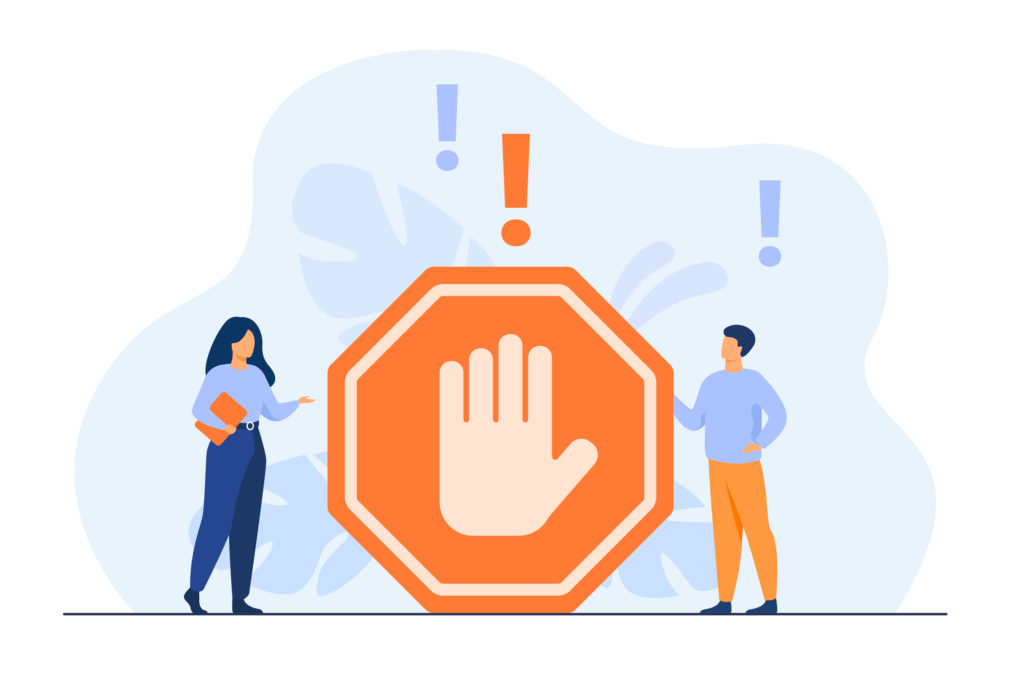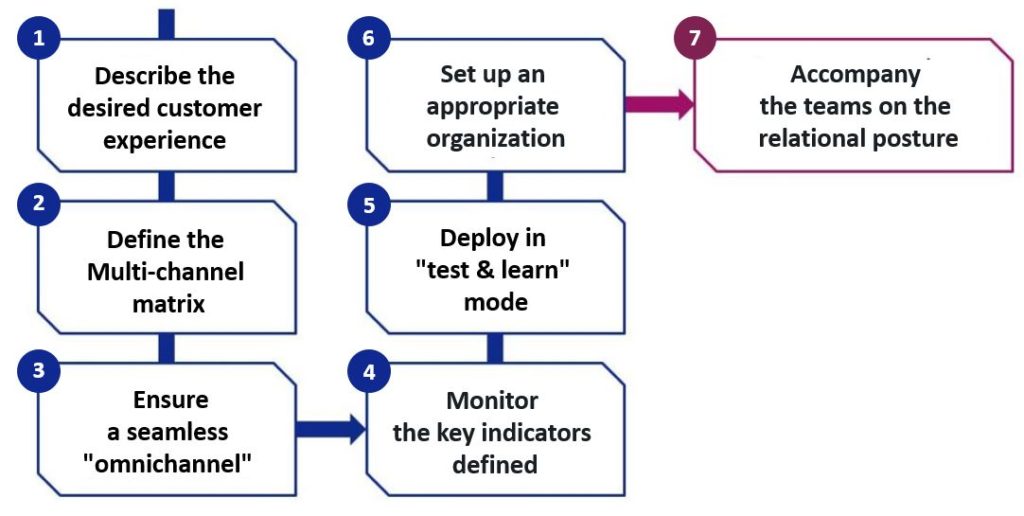In recent years, a wave of funds driven by digital technology has led companies, both large groups and mid-sized companies, to initiate real transformation projects by placing the customer at the heart of their concerns.
These transformation projects have resulted in the redesign of the experiences that these companies want their customers to have in the short, medium and long term.
Today, the promises of digital technology, embodied by certain players who have made customer satisfaction their DNA, have raised customer expectations in terms of the experience delivered by companies.

Meeting these new expectations is becoming more and more a strategic issue for companies, in order to :

A loyal customer is a customer who :
Customers with the best past experiences spend 140% more than those with the worst past experiences.”- Peter Kriss, Harvard Business Review
As noted in the latest BVA 2020 study, the digitalization of customer relations is increasing over the years. It is reflected in:

Some companies have chosen to make digital channels the cornerstone of their exchanges with their customers.
This is the case of Fnac Darty, which since 2019 prioritizes the use of Chat and WhatsApp messaging because it is considered more instantaneous and closer to the uses of their customers [Source Floriane Salgues – E-Marketing.fr].
Nevertheless, the telephone is still very popular with a majority of customers and email will become the 1st contact channel for the French in 2020.
In a long-distance relationship, the customer often chooses the telephone channel when :

Opening a new contact channel will not redistribute “existing” interactions.
A new channel can create a need among a customer who would have done otherwise before. Finally, the flow of contacts for the company can increase and will be spread over the different contact channels.
This is one of the reasons why the company needs to work, upstream, on the organization to be put in place according to the experience and the targeted customer commitments.

1- Describe the desired target experience, in order to put things back in place: first define the target customer experience that the company wants its customers to have and then align the “internal”. That is, processes, organization, tools and skills.
2- Define the “multi-channel matrix” in order to define the “preferred” contact channels (the highways), the channels available to customers but not recommended (the alternate routes) and the contact channels that are not recommended (the no-ways).
3- Ensure a seamless “omnichannel” path for the customer, by implementing a solution that provides a 360° view of the customer and his interactions.
4- Set up an appropriate organization to meet the challenges of immediacy and added value of the response provided.
5 – Deploy in “test & learn” mode, to avoid the tunnel effect and be able to react quickly to customer feedback.
6 – Monitor the key indicators defined, to ensure that the solution meets the needs over time.
7 – Accompany the teams on the relational posture, adapted to each channel, and aligned with the target customer experience. This can be translated into a relational charter.
Multi-channel solutions, such as RingCentral’s Engage Digital, can bring value to the enterprise for both the customer and employee experience.
1. To enrich, simplify and personalize the customer experience:
2. To simplify the employee experience and enable them to provide the added value expected by customers
Advisor view:
Managers’ view:
IT team view:
For 25 years, the Activeo group has been accompanying companies in France and abroad towards relational excellence.
The complementarity of our three businesses (consulting, integration and application development) allows us to respond to 4 major challenges facing companies
Activeo Group is a member of the international LimeBridge alliance.
